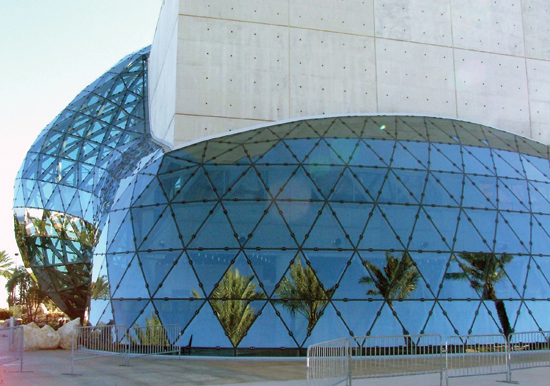Why Galvanize?
Learning Objectives:
- Discuss the ways in which hot-dip galvanizing affects steel performance and leads to fulfillment of green building goals.
- Differentiate between hot-dip galvanizing and other coatings in terms of sustainability, coverage, maintenance, and performance.
- Describe the contribution of hot-dip galvanizing to credits in LEED 2009 and LEED v4.
- Explain the advantages of duplex systems in terms of an aesthetic, sustainable solution and the synergy involved.
Credits:
The One World Trade Center Spire...the Salvador Dali Museum...the Cotton Bowl...Faneuil Hall—all modern signature projects that have incorporated hot-dip galvanizing. Used in industrial applications for more than a century where corrosion protection was critical, the process of hot-dip galvanizing—steel coated with zinc—is being used increasingly by architects to achieve sustainable, aesthetic results. Though corrosion resistance is implicit in any specification of galvanizing, designers are also recognizing that the process affords low initial and life-cycle cost, durability, longevity, and versatility. This article will introduce hot-dip galvanizing as a sustainable process, outlining the environmental and economic benefits, the design considerations, and aesthetic possibilities. Also highlighted will be case studies where hot-dip galvanizing has helped achieve these goals.
Hot-Dip Galvanizing: Steel + Zinc
Hot-dip galvanizing is the process of coating fabricated steel by immersing it in a bath of molten zinc. The process is part of a green solution for today's buildings and offers a cost-effective, low-maintenance method of enhancing steel performance by providing superior corrosion protection. Although corrosion is a naturally occurring phenomenon, it has significant consequences, financial and otherwise. Every year, corrosion costs an estimated 3 percent of the gross domestic product in the U.S./Canada, and $2.2 trillion worldwide. Beyond that, corrosion wastes natural resources and can result in loss of structural integrity and outright structural failure—scenarios that can be reduced by effective protection systems that are best deployed at the start of a project. While protective coatings for steel differ widely in terms of cost, performance, sustainability, and durability, hot-dip galvanizing is one sustainable system that has proven real-world performance in combating corrosion for decades.

Photo courtesy of American Galvanizers Association
A duplex system was selected for the Salvador Dali Museum in coastal Florida.









